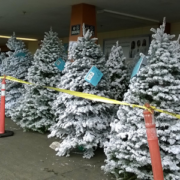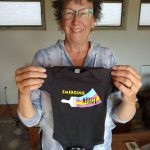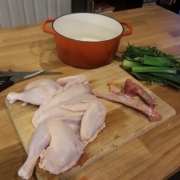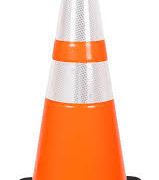In Search of Āina in Hawaii
Honored to have Decolonial Passage publish this essay, and then nominate it for Best of the Net 2023.
We have crossed the Big Island of Hawaii to the western Kohala shore in search of a sandy beach and surf. It is raining hard on the eastern shore, in Hilo, where we are staying for two weeks. We haven’t come this way – over seventy miles of two-lane roads – because of the rain. No, the rain is agreeable to us: the rain is warm, the air is warm, the rain comes and goes like a Top Ten Hit every twenty minutes on the AM dial. Our condo on the eastern shore is on the third floor of an old concrete building and our generous lanai is perched over Carlsmith Park, where the flowering jungle is kept back by the pool wall. Beyond the wall, tiny clear, blue inlets weave in among the palms and acacias, and turtles break all the state’s laws about staying ten feet away from tourists. This is what I imagine when someone says “paradise.”
We have come this way, west over the saddle road, because paradise and all its rocky cliffs, all its turquoise and white water, waves humping unyielding lava flows, are not the best place to take a dip, boogeyboard or stroll along the sand. Hapuna Beach is one of the island’s few sandy beaches, over on the western, older shores of the island where time and water have tamed the lava. And so we have driven over in an old, faded, dirty Honda Civic rented from a local boy named Tony who surely knows his wrecks. We are standing under a shade tree with round shiny dark green leaves the size of lunch plates. Stu is holding a boogeyboard and scanning the sea.
But there are no waves on Hapuna Beach today. Stu shrugs, and tosses the boogeyboard on the picnic table under the tree, and we walk out across the beach. For the afternoon, we read and walk and read and swim. Stu sits at the picnic table after a swim, sees something in the sand, and wiggles loose a piece of flotsam with his toe. It’s a teaspoon, dropped by some recent picnicker. He sets it on the bench, and wanders back to the sea.
The sandy teaspoon is upside down on the bench. Something about its shape is familiar to me, and as I reach to turn it over, I know what I will see: a few curlicues and a small flower stamped into the cheap stainless. The very same pattern on the flatware my parents bought with Green Stamps in California and that I used every day of my childhood. A few pieces even came with me when I left home and are still somewhere in our camping equipment in Oregon, sixty-three years after my parents handed those Green Stamps over to the gas station attendant and took home the service for eight, serving spoon and butter knife included.
The spoon, like so much else in Hawaii, is not from around these parts. The spoon is an example of what’s thwarting me in my Don Quixote-like search for the local and the real – the people, the food – on this big, fecund island. Which, oddly enough, I’ve been thinking about a lot on this particular afternoon, sitting under the tree with the lunch plate leaves, reading MFK Fisher’s “Serve it Forth.” When I travel, I come full of expectations. Not that I will shop in boutiques or put on a tan. I come looking for local food and local people I can talk to about the food they eat. Just as Fisher in her book is traveling the centuries, looking to make sense of how and why we eat what we do, I want to understand the food of Hawaii, and why and how Hawaiians eat it. I want to experience it from the inside out.
When we arrived at the condo in Hilo, I opened a cupboard to find two boxes of Jello left by the previous renters. Not an abomination, exactly, but a curious purchase in the land of papaya, passion fruit and macadamia nuts. Why did they buy Jello? And why didn’t they eat it? Maybe they visited the big Hilo Farmer’s Market one morning and brought home a papaya, which made them forget entirely about the strawberry banana Jello in the cupboard.
It is hard to override our baser tastes, driven by convenience and habit. Our condo Jello eaters, the spoon in the sand, they’re why I am tilting unsuccessfully at this windmill, searching for local food, and the old ways of eating it. All 1.5 million Hawaiians and the eight- to nine-million tourists who visit here each year are consuming mostly imported food. Only about twenty percent of what Hawaiians eat is actually produced in the islands. In 2013, food imports here were almost $7 billion of Jello and other pantry staples, $8 million in bread, pastry and cakes, $16 million in beer, $19 million in frozen beef, and $23 million in tuna. The number one fruit import? Oranges. Yet nearly every neatly trimmed yard we pass is home to a tree that groans under a canopy of oranges. So many oranges that paper bags full of oranges are often left at park entrances for our pleasure.
As I sit thinking about the power of local food for local people, I watch the Hapuna Beach gardeners raking up the fallen leaves and the larger-than-life almond-like seeds that have fallen from the trees with the big green leaves. Could these be the Malabar chestnuts I’ve read about? After we return to Hilo, I read up on Hawaiian trees and discover I have spent the afternoon under a Sea Almond, and that its seeds are a prized nut in India. Here in Hawaii, where they import eighty percent of their food across thousands of miles of ocean, they are swept up and tossed away.
There are farmers markets here on the Big Island every day of the week. This is a positive sign, no? Farmers, coming together, selling local food. But I had been warned before we ever arrived that most of the food sold there was bought wholesale by the vendors from large produce suppliers, much of which is not even grown on this island or any of its brothers here on this chain of lonely islands, the farthest from other land masses of any islands in the world. Some vendors offer a backyard papaya or long beans from their garden, but the rest of the items on their tables come right out of Dole boxes, sitting in plain sight, and are parceled up into convenient tourist-size bags, meant to go back into that tiny fridge in the resort hotel.
Yes, there were passion fruit, lychee and rombuton. And I was happy for them, and even for the common, familiar things like eggplant and peppers. A banana grown here or a fresh pineapple is full of the flavor we never taste on the continent, 2,500 miles away, after a long ocean voyage en route to mainland cold storage.
But I wanted more, things I had read about and longed to taste: tree tomatoes, egg fruit, ice cream beans, Malabar chestnuts, ohelo berries from atop the volcanoes. I asked about them, or about particular things I did not know or understand, and a veil came down over the seller’s eyes. They pointed out that papaya was five for $3. What else did I need to know? A busy market is not the time or place for history and cooking lessons. I left, a few somewhat familiar items in my bag, but an ache in my heart to know more, taste more, to be for a moment not a haole, a cracker, a gringo, a honky. But for just a few days, a part of the āina.
Āina. It’s what Hawaiians call the land, but it is more than that. It is more than the Italian notion of terroir, which is merely all the physical things … land, earth, soil, sun … that impart flavor to a particular wine. To Hawaiians, the land is alive in a very human sort of way: “… it can do things, want things, and know things. [Hawaiians] are the offspring of a union between the earth and sky, making the āina a direct relative,” writes Judy Rohrer in her book, Haoles in Hawaii.
All Hawaiians needed, the āina provided, and then Captain Cook showed up in 1778. Suddenly, āina was not enough. In less than one-hundred years, ninety-five percent of native Hawaiians had disappeared, ravaged by diseases and our ways. “This powerfully demonstrates” writes Rohrer, “how colonialism can be seen as a form of genocide in Hawaii.”
Now the islands are dependent on the mainland and foreign markets (mainly Indonesia and Thailand) for mattresses, cars, the oil to fire their electric generating plants. And yes, Christmas trees, stainless steel flatware, oranges and Jello.
Maybe I want what is inappropriate for a haole to desire. Or for a honky to want in New Orleans, a gringo to crave in Oaxaca. My own whiteness means I am forever shackled to the only food culture most of my kind can experience and most of it does not interest me: processed fast food and the diminution of the world’s cuisine. Think French cassoulet recreated as franks ‘n beans in a can. I can never make rabbit as a Frenchman, or gumbo as a Cajun, or poke as a Hawaiian. And yet I want to go deep, make it part of my marrow. I, who am a symbol of another kind to Hawaiians. I am the spoon, I am the Jello. I am the descendant of Captain Cook.
So I bash along against the tide. I arrive. I observe, I ask questions and teach myself. I paw through Hawaiian cookbooks in the Hilo bookstore, and set aside in a stack on the floor, unwanted, the books by celebrity Hawaiian chefs and the recipe collections by haoles much like myself. Where is the good stuff, the original ways? There is nothing else left on the shelf.
I come home to the condo from the Maku’u Farmer’s Market on Sunday with taro and pumpkin blossoms. I dice the unfamiliar pale purple taro and boil it until tender. Is this the way? I don’t know, but I know tubers, and this seems right. When the taro is fork-tender, I drain it, let it cool, mix it with local goat cheese, and stuff the mixture inside the pumpkin blossoms. I dredge them in flour and egg and flour again, and fry them, and serve them up on a salsa of peppers, avocado, papaya, shallots and cilantro. They are not Hawaiian, but they are very good, out on the lanai, near the turtles.


 Two passions: food, words. Some days, it’s a tug of war, some days, a peaceful coexistence.
Best day ever? Create it, cook it, eat it, write about it. I sold my restaurant, Nora’s Table, in 2015, and now I can be possessed by anything in the long day that I choose: writing 400 words, creating the next menu for the Chefs Collective at Ruby June Inn, teaching a cooking class at Jacob Williams Winery, or tromping through the fields with farmer Laurel Bouret.
A rainy afternoon with a foundational cookbook, such as Marlene Mater’s fabulous “Allepo Cookbook” or Michael Ruhlman and Brian Polcyn’s “Charcuterie” can feed my spirit and spark my creative power. So can reading Maggie Shipstead, Michael Chabon or Alison Kraus.
I live in Hood River, Oregon, with Stuart, also known as the Happy Meal Man. In other words, all I can desire. And then there’s Satchel, our six-year old Idaho Shag who is simply the world’s best dog. We run together, and sometimes, we even let Stu join us.
Our oldest daughter Annie and grandson Levi live in Eugene, Oregon. Annie is cooking in restaurants, like her Mom. Son Max and his wife Hannah and our granddaughter Shiloh are in Portland, where he is a school principal. It’s a good tribe, all the way around.
Two passions: food, words. Some days, it’s a tug of war, some days, a peaceful coexistence.
Best day ever? Create it, cook it, eat it, write about it. I sold my restaurant, Nora’s Table, in 2015, and now I can be possessed by anything in the long day that I choose: writing 400 words, creating the next menu for the Chefs Collective at Ruby June Inn, teaching a cooking class at Jacob Williams Winery, or tromping through the fields with farmer Laurel Bouret.
A rainy afternoon with a foundational cookbook, such as Marlene Mater’s fabulous “Allepo Cookbook” or Michael Ruhlman and Brian Polcyn’s “Charcuterie” can feed my spirit and spark my creative power. So can reading Maggie Shipstead, Michael Chabon or Alison Kraus.
I live in Hood River, Oregon, with Stuart, also known as the Happy Meal Man. In other words, all I can desire. And then there’s Satchel, our six-year old Idaho Shag who is simply the world’s best dog. We run together, and sometimes, we even let Stu join us.
Our oldest daughter Annie and grandson Levi live in Eugene, Oregon. Annie is cooking in restaurants, like her Mom. Son Max and his wife Hannah and our granddaughter Shiloh are in Portland, where he is a school principal. It’s a good tribe, all the way around.
